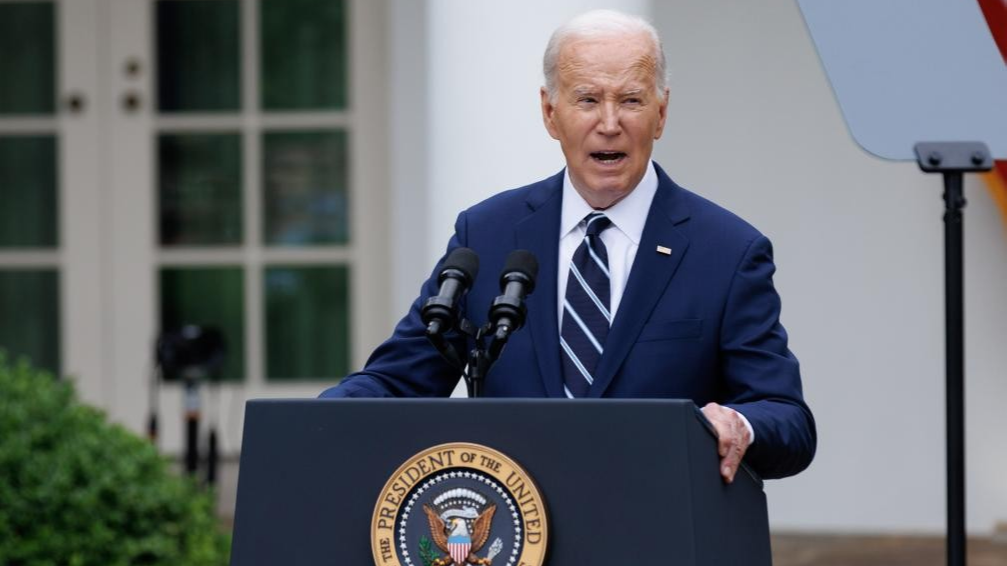By Ding Duo

A view of the Shangri-La Hotel in Singapore, the venue for the 21st edition of the Shangri-La Dialogue held in Singapore, May 31, 2024. [Photo/Xinhua]
On May 31, Chinese Defense Minister Dong Jun and his U.S. counterpart Lloyd Austin held a meeting during the Shangri-La Dialogue in Singapore. According to official information released, the two sides exchanged views on the relations between the two countries and the two militaries, the Taiwan question, the South China Sea issue, the Ukraine crisis, and the Palestinian-Israeli conflict.
The meeting between the Chinese and U.S. defense chiefs is a measure to implement the consensus reached by the leaders and stabilize the bilateral relationship and a continuation of the interaction between the two militaries in recent times. It signifies that the two countries are resuming regular military-to-military communication, which is crucial to avoiding a direct conflict between two of the world's major powers. The consequences of a military conflict between China and the U.S. are unbearable for both sides.
As maritime powers, the interactions between China and the U.S. on maritime affairs constitute an integral part of the bilateral relationship. China and the U.S. have become increasingly divided over the interpretation and application of the rules of the international law of the sea and the handling of maritime issues around China, such as the South China Sea dispute and maritime military games. A clear example is that the U.S. recently deployed medium-range missiles in the Philippines as part of their joint military exercise, posing a substantial threat to regional security, which is firmly opposed by China.
In recent years, the U.S. has positioned China as its number one "strategic rival" and launched all-out competition and containment against China. Some people even say that China and the U.S. have fallen into a "new Cold War." Whether this judgment is accurate or not, there are more and more negative factors in the U.S.-China relationship, and unpredictability is on the rise. The U.S. has not only launched a trade war against China but has also been provoking tension in the South China Sea, and even China-U.S. people-to-people exchanges are facing many challenges as a result. Against this background, there are growing concerns around the strategic competition between the two countries in the Asia-Pacific region.

U.S. President Joe Biden speaks at an event in Washington, D.C., U.S., May 14, 2024. [Photo/Xinhua]
The "Indo-Pacific Strategy" pursued by the Biden administration is materializing, and "rules hegemony" and "military hegemony" have become prominent features of the U.S.'s South China Sea policy. Regardless of whether the relationship between China and the U.S. will improve or deteriorate, the U.S. is not likely to change its stance on the South China Sea issue, which may be an obstacle to achieving positive interaction between China and the U.S. in maritime affairs.
It should be noted that the White House delegated the decision-making power to take "freedom of navigation operations" at sea to the military many years ago, which means the military plays a very important role in Sino-U.S. maritime relations. Some in the U.S. military do not seem to be afraid of a conflict between China and the U.S., or at least they think the U.S. can afford friction with China in the Asia-Pacific region. The reason behind all this is that the U.S. military treats China's military growth as a major threat to its global and regional dominance and believes that China's actions in the East and South China Seas in recent years are aimed at challenging the U.S.-led regional security order. As a result, mutual trust between the U.S. and China in the military field has fallen to a low level.
The U.S. military presence in the Asia-Pacific region and its deep involvement in the South China Sea have not only become the biggest external disrupting factor for China and its neighboring countries to manage and resolve relevant disputes but also directly affect China's surrounding environment and overall strategic situation.
For the U.S., maritime issues are one of the main triggers for the Biden administration to implement the "Indo-Pacific Strategy," and it is also an important starting point for the U.S. to play a strategic game with China and maintain its traditional geopolitical advantages. It is worth noting that among the important and sensitive issues in China-U.S. relations, there are often different voices among the mainstream elites in the U.S. regarding areas such as economy, trade, science and technology, but they have a relatively consistent attitude toward maritime issues, and they generally believe that the maritime tensions between the two sides are at high risk of getting out of control.
China needs peace and stability in its neighborhood, the U.S. does not want to see war in the Asia-Pacific region at present, and the two sides' interests coincide in this sense. To translate this unanimous goal into joint action to build a regional security framework, a key issue needs to be addressed, that is, how to deal with the relationship between the Asia-Pacific military alliance system formed by the U.S. during the Cold War and the new security pattern and complex security needs formed in the Asia-Pacific region after the Cold War. The core of this issue is how the U.S. views China's legitimate rights and interests and reasonable demands, and gradually finds an approach acceptable to both sides and forms some kind of institutional arrangement.
The improvement of Sino-U.S. military relations has not come easily. In the long run, China and the U.S., as two major powers, should continue to work together to manage crises, prevent miscalculations, and avoid conflicts.
The author is a special commentator on current affairs for CGTN.

 中文
中文



